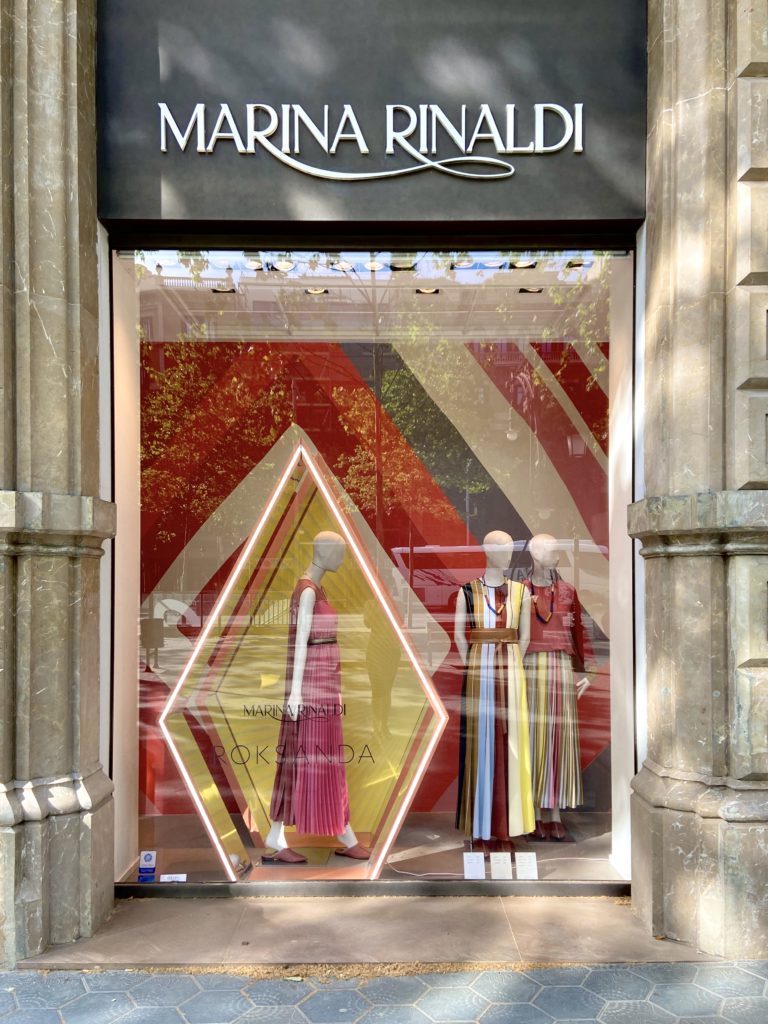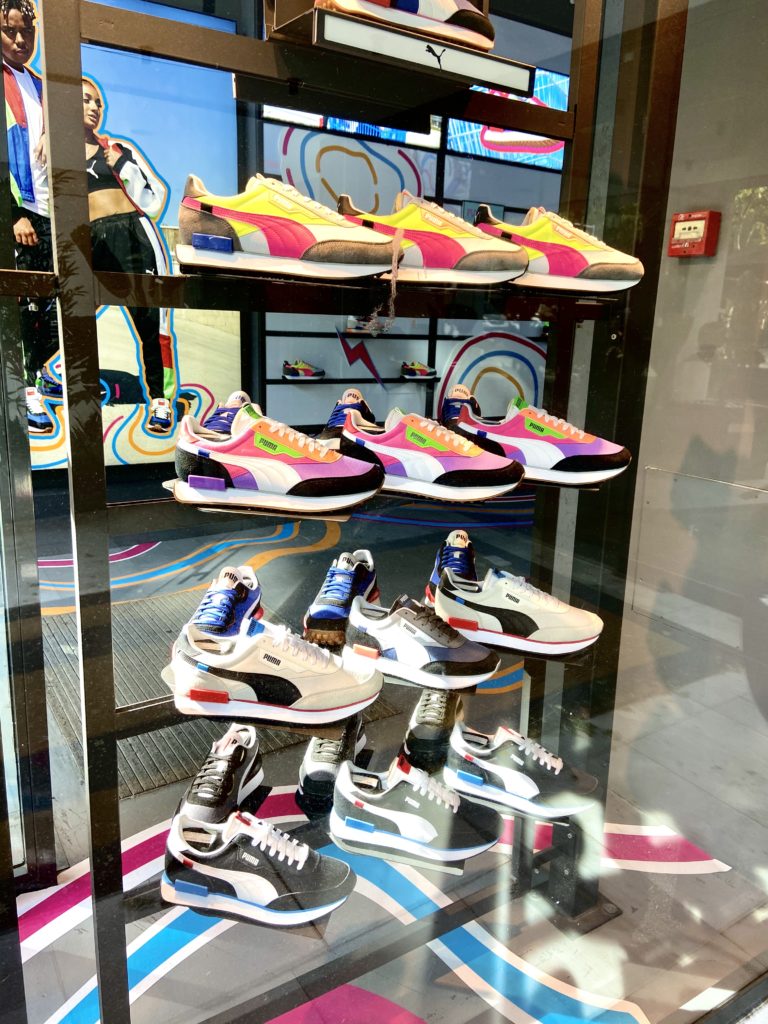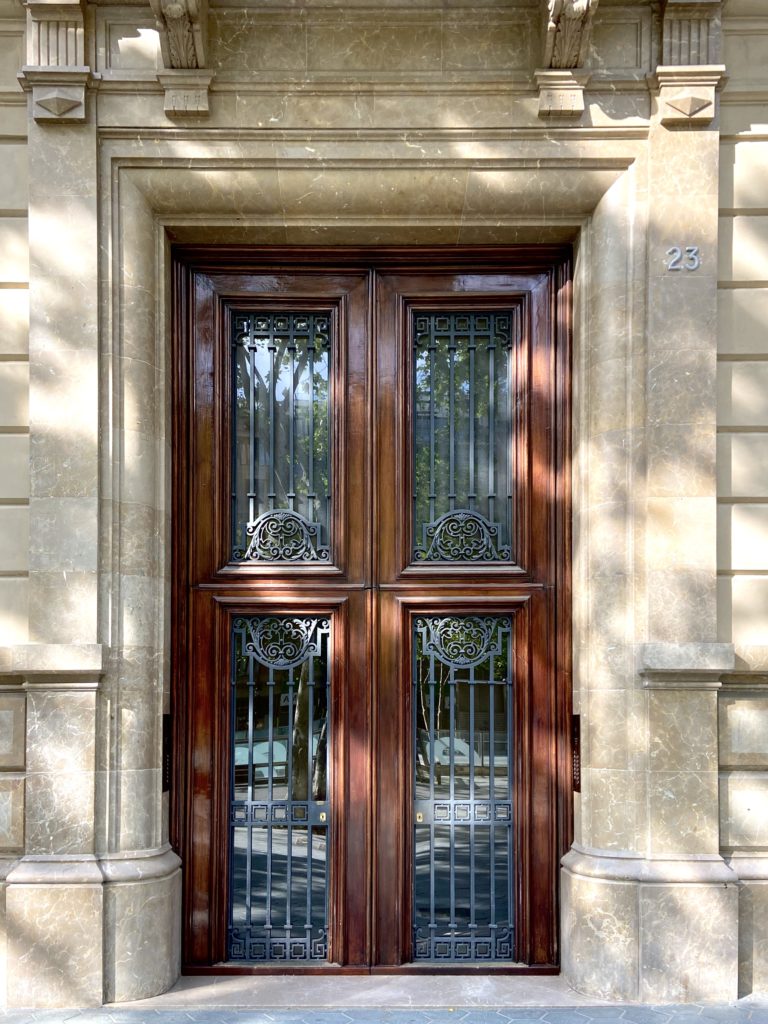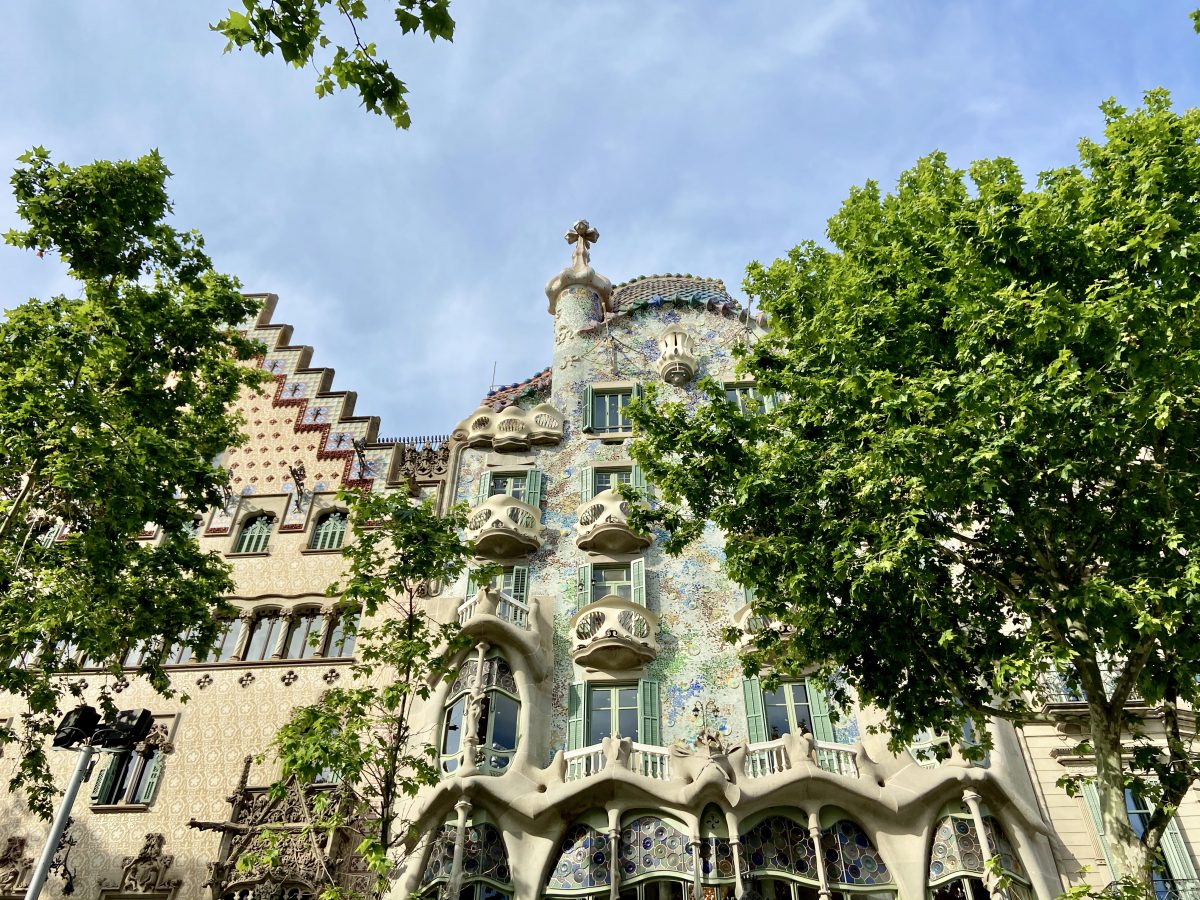The Eixample of Barcelona is the most recognizable area of the city. It has the most exceptional offer in restaurants, shopping, and sightseeing in Barcelona.

The Eixample district (Ensanche in Spanish) has existed since 1860 and is the newest part of the city. It is divided into 6 neighborhoods: Nova Esquerra de l’Eixample, l’Antiga Esquerra de l’Eixample, Sant Antoni, Dreta de l’Eixample, Sagrada Família, and Fort Pienc. As a result of the ingenious urban approach of the Catalan engineer Indefons Cerdà during the 1850s, Eixample is a perfect grid of wide and perpendicular streets that form 113-meter-long blocks, chamfered at their corners to facilitate visibility and traffic flow, with an internal patio or garden in each one of them.
Formerly, it was the neighborhood chosen by the rich Catalan industrial bourgeoisie to build their residences. For this reason, throughout the district, there are floors with spectacular entrances with modernist design, apartments with high ceilings, and beautiful finishes that specify that wealth. The right side is the oldest, so it preserves a more impressive architecture, although there is no great difference between the two parts. Today, it is one of the best districts of Barcelona due to the number of services and amenities it has and also one of the most popular between tourists, both to visit and to stay. Since it is a central area it contains a large number of masterpieces, as well as many points of interest; and, at the same time, it is a residential area with many shops and stores.

Currently, the Eixample of Barcelona is one of the residential areas with the highest population density. The district is incredibly beautiful, ideal for walking while enjoying its glorious architecture and providing an active life, both day and night. On the other hand, it is very well connected by transport services (various lines and stops for metro, buses, FGC and RENFE trains). In addition, the district includes an area called Gayxample, with entertainment and shopping venues aimed at the LGBT community.
Visit Eixample
Walking around Eixample district you’ll be able to see the most famous and important streets and squares of Barcelona.

Paseo de Gracia is the main street of the Eixample and at the same time, one of the most representative of the city of Barcelona. It is located in the heart of the district and marks the dividing line between the right and the left side of the Eixample. On the one hand, it is the avenue that includes the most modernist buildings and several well-known art galleries. It is also considered the most elegant avenue in the city for hosting countless stores, boutiques, and shops of the best national and international brands, like Chanel, Burberry, Zara, Guess, and others.

Other distinguished streets and squares that must be seen in Barcelona’s Eixample are: the Rambla de Cataluña, Avenida Diagonal, Gran Vía de las Cortes Catalanes, Ronda de San Antonio, Plaza de Cataluña, Plaza de España, la Plaza Universidad, Plaza de la Sagrada Familia, Plaza de las Glorias Catalanas, Plaza de Gaudí, Plaza Francesc Macià. And Plaza de Toros La Monumental, which apart from becoming a venue for musical events and circus shows is home to the Bullfighting Museum of Barcelona.

Eixample monuments and buildings
The Eixample is a place full of charm that has the most important modernist buildings in the Catalan capital. Here are based most outstanding works of the modernist architect Antoni Gaudí, such as Casa Batlló, La Pedrera, and, of course, the Basilica of the Sagrada Familia, which is the most outstanding modernist building in Barcelona and a must-see if you travel to the city.

Adjacent to Casa Batlló is Casa Amatller, the work of Josep Puig i Cadafalch; and in the same block, there is also Casa Lleó i Morera created by Lluís Domenech i Montaner. If you are an art lover, you cannot miss the Sant Pau Modernist Venue, the National Theatre of Catalonia, the Barcelona Auditorium, and the Arc de Triomf.

Eixample museums
Likewise, the district has a very high number of museums, such as the Music Museum, the Egyptian Museum, the Museum of Catalan Modernism, the Antoni Tàpies Foundation, the Perfume Museum or the Palau Robert, among others.

